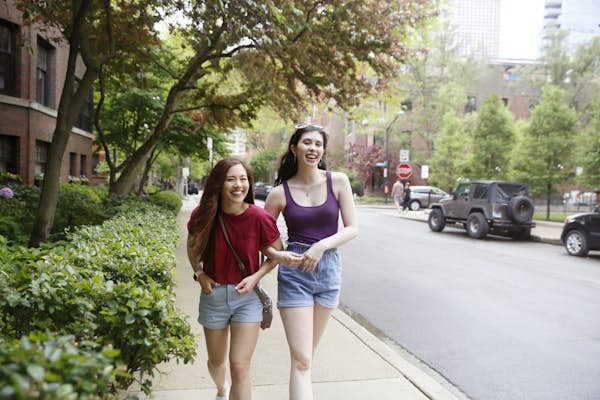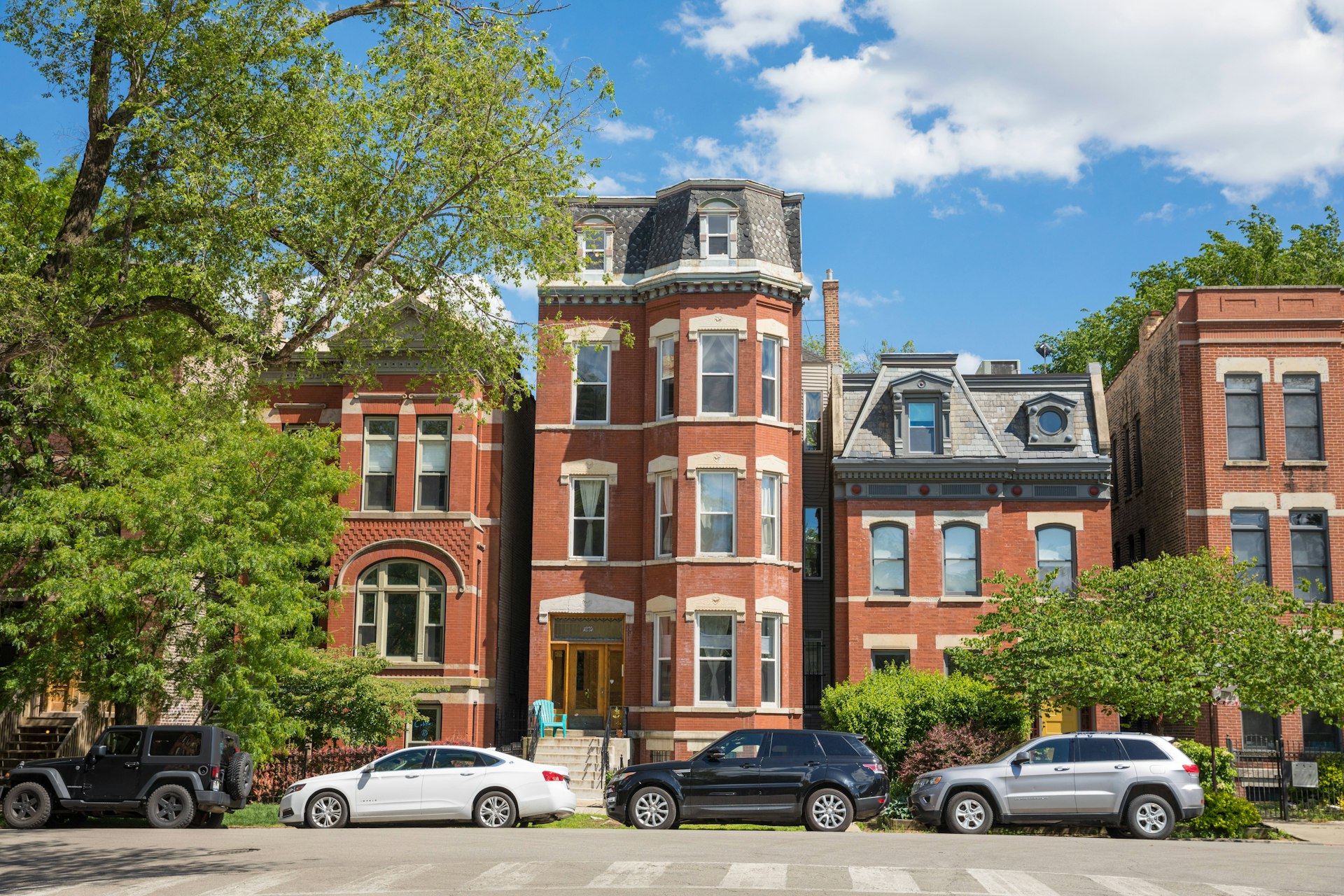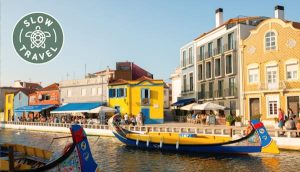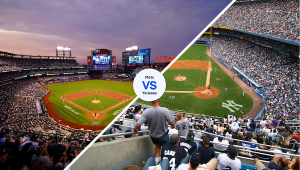
With steely skyscrapers, lakefront beaches and world-class museums, Chicago will blow you away with its low-key yet highly cultured spirit.
The city center is an architectural wonder, but it’s Chicago’s mural-splashed neighborhoods – full of inventive restaurants, fringe theaters and sociable dive bars – that will create lasting memories of your time in the Windy City.
Here are the best neighborhoods to explore on your trip to Chicago.
Immerse yourself in the best experiences the world has to offer with our email newsletter delivered weekly into your inbox.
The Loop
Best neighborhood for sightseeing
The Loop is Chicago’s center of action, named for the elevated train tracks that encircle its busy streets. And though there’s debate on whether the Loop is an actual neighborhood, no one can deny it’s the beating heart of the city.
There’s lots to see here: the Art Institute, Willis Tower, the Theater District and Millennium Park are top draws, while the city’s biggest festivals keep people flocking to the area’s large green spaces.
The Loop has loads of lodgings – cool boutique and architectural hotels are the specialty. The neighborhood is convenient to the parks, festival grounds, museums and the Theater District, with easy transport access to anywhere in the city.
Nightlife, however, is not the Loop’s strong point, as most of the restaurants and bars here are geared toward office workers. There’s not much open after 9pm.
Streeterville and Navy Pier
Best neighborhoods for shopping
Streeterville packs in deep-dish pizza parlors, buzzy bistros, art galleries and so many upscale stores that its main vein – Michigan Avenue – has been dubbed the “Magnificent Mile.”
This neighborhood is unapologetically in-your-face commercial. Shops, restaurants and amusements abound. Navy Pier, a half-mile-long wharf of tour boats, carnival rides and a flashy, king-sized Ferris wheel, is the top sight.
Architecture is a neighborhood highlight, thanks to iconic buildings such as the Tribune Tower and Marina City. Art is another strong suit of the area, especially underrated sights such as the Driehaus Museum and Arts Club of Chicago, as well as Streeterville’s many galleries.
The Near North is Chicago’s most lodging-packed neighborhood, with hotels on practically every street corner. They’re mostly midrange chain properties, though a couple of nifty boutique hotels and hostel-hotel hybrids are mixed in.
This neighborhood is also where you’ll find Chicago’s mother lode of restaurants. There’s a huge variety, from deep-dish pizza and ritzy seafood to modern Mexican. Visitors are drawn here by all the hotels, so prices can be higher than elsewhere.
The best time to visit Chicago
Gold Coast
Best neighborhood for luxury
The Gold Coast, as you’d expect from the name, is Chicago’s ritziest area. Stylish locals glide in and out of the neighborhood’s top-end boutiques as the occasional Tesla or Rolls-Royce wheels along the leafy streets.
The Gold Coast is relatively compact, but it holds several worthwhile sights. The 360° Chicago observatory and Museum of Contemporary Art are the top attention grabbers.
Lodging options here tend to be large, luxury hotels, with easy access to both downtown and the lakefront, plus you have a shopping bonanza on your doorstep.
The Gold Coast is the epicenter of hot-spot steakhouses, swanky eateries and martini lounges for pretty people on the prowl. Glamorous old-time lounges and skyscraper bars with spectacular views can also be found in this neighborhood.
 Make your way to the gorgeous Lincoln Park for epic city views © Jose Luis Stephens/Getty Images
Make your way to the gorgeous Lincoln Park for epic city views © Jose Luis Stephens/Getty Images
Lincoln Park and Old Town
Best neighborhoods for comedy and live music
The green space of Lincoln Park is Chicago’s premier playground, filled with lagoons, walking paths, beaches and zoo animals. Nearby Lincoln Park, adds top-notch restaurants, chic boutiques and lively blues and rock clubs to the mix.
To the south, stylish Old Town hangs on to its free-spirited, bohemian past with artsy bars and the improv-comedy bastion Second City.
Lodgings in this area range from hotels to B&Bs and hostels, and they have lots of character. They’re near fun nightlife, and some are a short walk to Lincoln Park, the zoo and beaches. They’re a bit removed from downtown’s sights, however. It’s also a popular neighborhood for short-term apartment rentals.
High-end restaurants such as Alinea and Boka hold court here, but Lincoln Park caters to budget tastes too, thanks to the student population of DePaul University.
Old Town’s options are quieter and quainter. This is a great area to catch some top-notch live performances in the evenings, with numerous options ranging from blues and rock music to comedy improv and dramatic plays.
Best free things to do in Chicago
South Loop
Best neighborhood for museums
The South Loop offers a wide range of things to do. The Field Museum, Shedd Aquarium and Adler Planetarium cluster at the lakefront Museum Campus. Peaceful 12th Street Beach and hilly Northerly Island offer nearby refuges to ditch the crowds. Historic house museums and a famed blues sight beckon nearby. This neighborhood doesn’t have many hotel options besides what’s around the enormous convention center.
 Come to Chicago’s Chinatown with an empty belly and a plan – you won’t be disappointed © eyfoto/Getty Images
Come to Chicago’s Chinatown with an empty belly and a plan – you won’t be disappointed © eyfoto/Getty Images
Pilsen and Chinatown
Best neighborhoods for culture
Chinatown bustles with noodle shops and small storefronts and further west is Pilsen, where Mexican culture mixes with Chicago’s bohemian underground, and colorful murals, taquerias and cafes result.
Pilsen’s 18th Street teems with Mexican taquerias, tamale shops, hip gastropubs and modern American restaurants – Caminos is a neighborhood staple. On the weekend the dive bar hosts Los Naturales, a pop-up natural wine bar, before transforming into a late-night hot spot.
Blue Island Avenue is a similarly rich vein. Chinatown offers a densely packed smorgasbord of noodle houses, low-cost bakeries and dim sum places.
Pilsen has activist cafes, microbrewery taprooms and artsy dive bars, while the Near South Side has neighborhood pubs and leafy patios. Chinatown isn’t much of a drinking destination, though it rocks for satisfying late-night, post-booze munchies.
Lakeview and Wrigleyville
Best neighborhoods for nightlife
Lakeview is the overarching name of this good-time neighborhood, known for its nonstop lineup of bars, theaters, rock halls and global eateries. Wrigleyville is the pocket that surrounds star attraction Wrigley Field, where big changes are afoot.
For years, sticky-floored boozers were the stock in trade. Now cocktail bars, fancy donut shops and trendy eateries have joined the game – foodies and families are thrilled. Those who perceive a loss of local color are not.
Nightlife is the specialty of Lakeview and Wrigleyville, and there are heaps of options: traditional sports bars and new cocktail bars around Wrigley Field, dance clubs and gay bars in Boystown and cozy wine bars, English pubs and jazz-wafting little taverns scattered elsewhere throughout the neighborhood.
Some great new boutique hotels have popped up recently, especially near Wrigley Field. They join several already-existing boutique properties and B&Bs, most of which are surrounded by rollicking bars, restaurants and music venues. The main areas can be congested and rowdy at night. Room prices typically rise when the Cubs are playing.
 Head to Wicker Park for top-tier restaurants and lots of ambiance ©Richard Weber/Alamy Stock Photo
Head to Wicker Park for top-tier restaurants and lots of ambiance ©Richard Weber/Alamy Stock Photo
Wicker Park, Bucktown and Ukrainian Village
Best neighborhoods for restaurants
The three neighborhoods of Wicker Park, Bucktown and Ukrainian Village in the larger area of West Town are trendy, hot properties. Hip record stores, thrift shops and cocktail lounges have shot up, though vintage Eastern European dive bars linger on many side-street corners.
Wicker Park is the more commercial heart; it’s flanked by Bucktown, Ukrainian Village and East Village, and smaller Noble Square. The restaurant scene includes a number of top Michelin-starred/James Beard Award nominees. Chef Bill Kim’s UrbanBelly, Big Star, and Dove’s Luncheonette are among the neighborhoods’ stand-outs.
The art galleries, onion-domed churches, a couple of national/ethnic museums and writer Nelson Algren’s house keep the area interesting. Walking or cycling the 606 trail is an excellent way to spend an afternoon.
For hostels, B&Bs and apartment rentals away from the tourist masses, this is your neighborhood. Everything is near buzzy nightlife and trendy shops, plus it’s only a 15-minute L ride to get downtown.
Trendy restaurants like Wazwan open almost every day, with many serving nouveau takes on classic comfort food. Division Street is a bountiful vein of snazzy bistros and pubs, many of which have sidewalk seating.
Milwaukee, Damen, Division and Chicago Avenues burst with cocktail lounges and chic bars, while authentically retro mom-and-pop joints thrive quietly on the neighborhood’s side streets.
Unsurprisingly for such a hip area, the northwestern neighborhoods have a bevy of choices for an evening’s entertainment. You’ll find venues for indie rock, hip-hop and other popular genres, as well as a few of Chicago’s smaller independent theater companies.
West Loop and Near West Side
Best neighborhood for trendy Chicago
The West Loop buzzes with hot-chef restaurants and on-trend bars that have taken over former meatpacking factories.
There’s chef Joe Flamm’s Rose Mary combining Croatian and Italian fare, Swift & Sons steakhouse, and La Josie for Mexican. Get over to Blind Barber for a drink and some late-night dancing. Development continues big time, with condos, tech-company offices and brand-name hotels rising at a dizzying pace.
The West Loop packs in a group of the city’s hippest, most trend-setting properties, with prime access to all the surrounding fashionable eats. You’ll pay big for the pleasure.
Fancy cocktails are West Loop’s calling card. Distilleries, wine bars and coffee shops that take their lattes seriously add to the scene. Further flung in the Near West Side’s industrial landscape is a smattering of breweries.



